If you grew up in the UK in the late 20th Century, you’re likely to have come across a Ladybird Book or two. From fiction to handy guides in their ‘learnabout’ series, these now collectable little hardbacks provide us with a snapshot in time.
The book in question is the 1977 ‘Learnabout Camping’, which retailed at 24p, 50-odd pages of utter joy. Coming across this little gem and oodles of colour illustrations, I thought it could be fun to compare these ideas from over 40 years ago to today’s notions of camping, and see exactly what has – and hasn’t – changed.
Kit and equipment
Perhaps the most obvious place to start, of course camping kit has come on a long way in the last four decades. Having said that, quite a few of the design principles are much the same….
We may have many more options at our disposal as bikepackers than just tents, but there’s a lot that these tents from the ’70s share in common with modern canvas. Perhaps the materials have been the most improved, with lighter and tougher options and waterproof treatments giving increased protection from the elements.
Sleeping kit has certainly advanced a lot, especially as the size and weight restrictions that travelling on foot or by bike pose on how much you can carry. Inflatable mats replace bulky under blankets or camp beds, although we can all agree on how useful sleeping bag liners are for keeping your bedding clean, as well as adding extra warmth.
For a lot of cases, it seems like cooking equipment hasn’t really changed much. I’d be willing to bet there’s more lightweight titanium options now for cookware and crockery. Apparently the spork was first patented in 1874, but does anyone know if it was a commonplace camp item in the ’70’s?
When we use the word ‘gadgets’, what springs to mind for you? For me, it’s high-tech GPS cycling computers, handy multi-tools or electronic tyre pressure monitors, not what you see above… A lot of these ‘gadgets’ are pretty unnecessary in a bikepacking context, although I can think of many an occasion where the shoe drying rack would come in handy!
Skills and methods
Just like the gear that we use, the way that we go about sleeping outside has evolved over time. Some skills have been developed and others lost, various methods become redundant and new technologies have given us fresh alternatives, too.
Many of the basic principles of finding a camp spot remain the same, although I must say that I was taught to find a very gently sloping gradient to pitch a tent on to help with drainage. You might have been taught these from an early age, or more likely learnt the hard way!

You don’t really need to know the names, but having a raft of knots up your sleeve can come in really handy
One of the skills that I think is much less prevalent today is knot-tying. Modern fixtures on kit can help make erecting tents, hammocks and tarps easier, but nothing beats knowing a few simple knots that can really help you get out of a pickle, or give a lot more versatility in how you choose to set up camp.
I’ve had first hand experience of this when learning how to hammock camp, as long lengths of rope give you much more flexibility with where you can hang your hammock, compared to systems like whoopie slings or carabiners that are more limiting in terms of distances and tree diameters. As a failed Navy cadet, I can tell you that if I can learn a knot or two, anyone can!
No matter where you’re riding, finding clean and safe water for drinking, cooking and washing is crucial. More remote and drier areas can make this more tricky, and thankfully today we have several options for water purification, including tablets, UV treatment devices, and just like the good old-fashioned method, boiling for five minutes!
Although convenience, lightweight bikepacking meals are certainly more popular now for simplicity and racing, there’s still a lot to be enjoyed with a proper camp cook! Check out Stef from Pannier.cc‘s cooking for ultimate bikepacking food, like the cheesy asparagus risotto he cooked up for us on the King Alfred’s Way recce.
Although this dit on personal hygiene is pretty funny, there’s some sound advice in there. Don’t wait until you get cold to layer up!
On the whole, camping has changed much less in the last forty years than I was expecting on finding this book, but here’s a corking example of something that has. No more digging moats in very wet weather, thankfully!
Ethos and approach
What we know today as the Leave No Trace principles were just as important back then.
Whenever you strike camp and leave a site, your two main objectives should be-to clean as much of your equipment as possible so that you do not carry dirty gear; and to leave the site looking so clean and tidy that no one will be able to see that you have been there.
This lovely quip also sums up a lot of what responsible adventure means:
When you are ready to leave, invite the landowner or warden to inspect your site. In this way you will not only ensure that they are satisfied with your efforts, but you will also leave goodwill behind for the other campers who may follow you.
Did you camp in the ’70’s, or even before? Let us know what’s changed for you in the comments, and happy camping!
Last modified: 8th March 2021

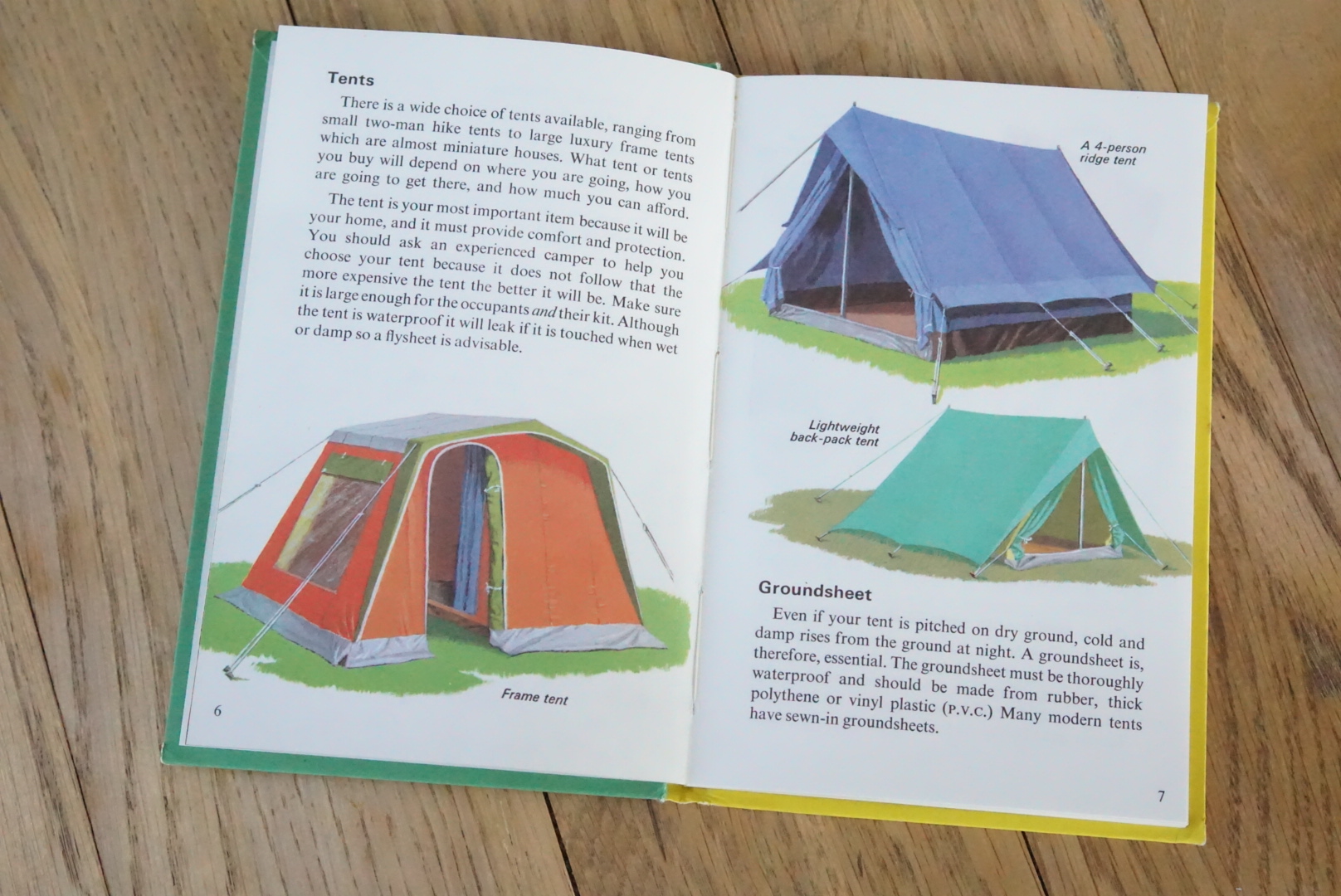
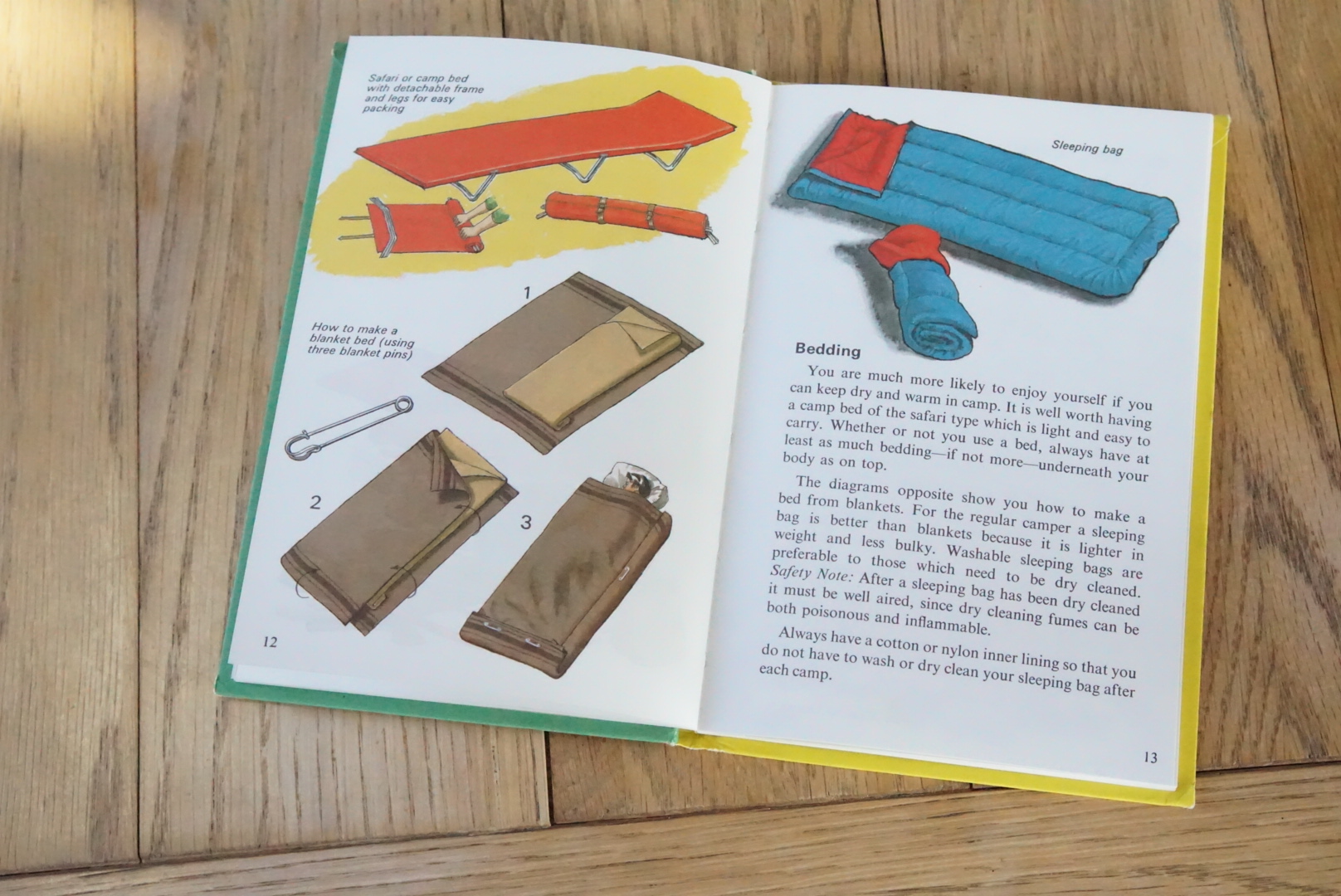
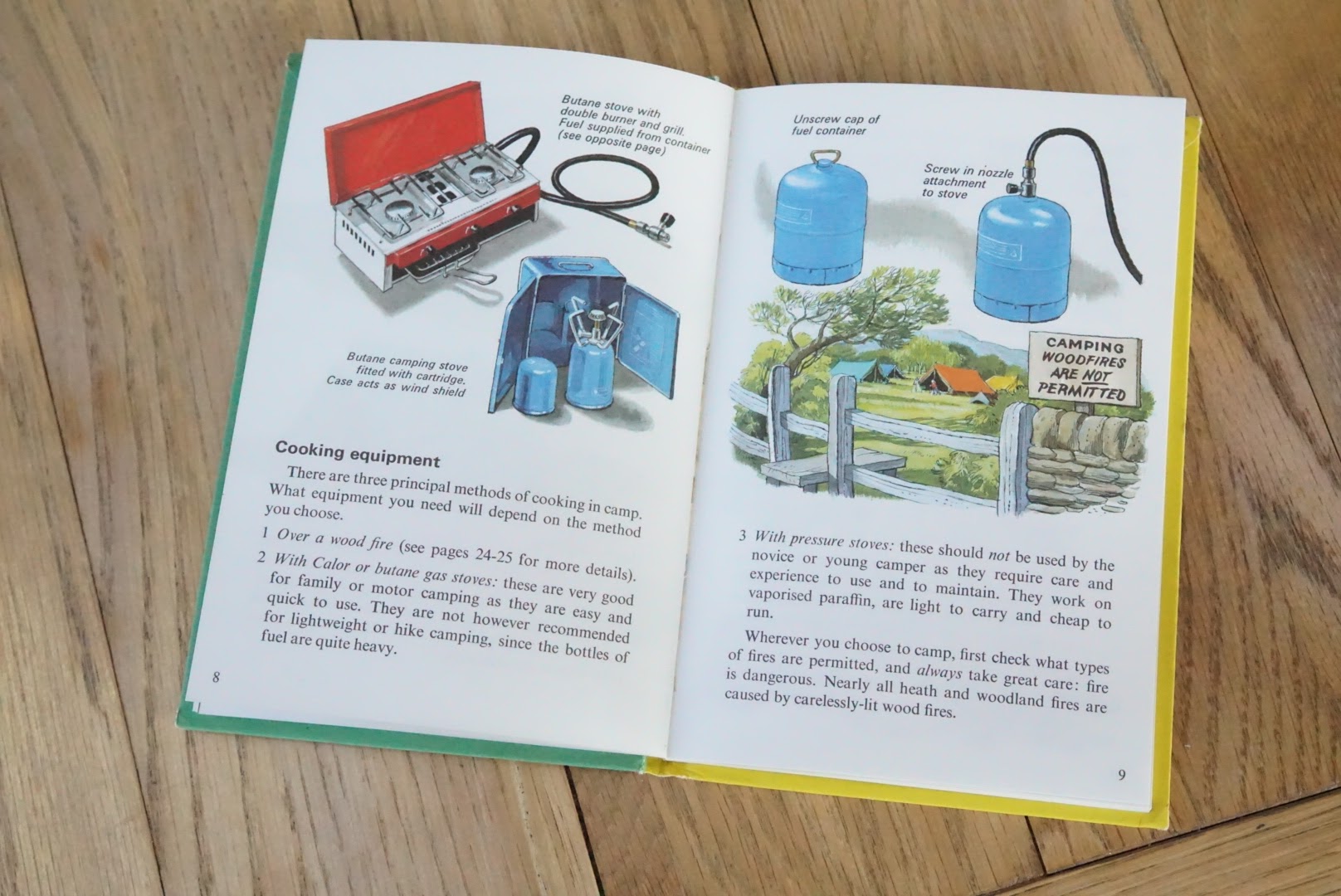
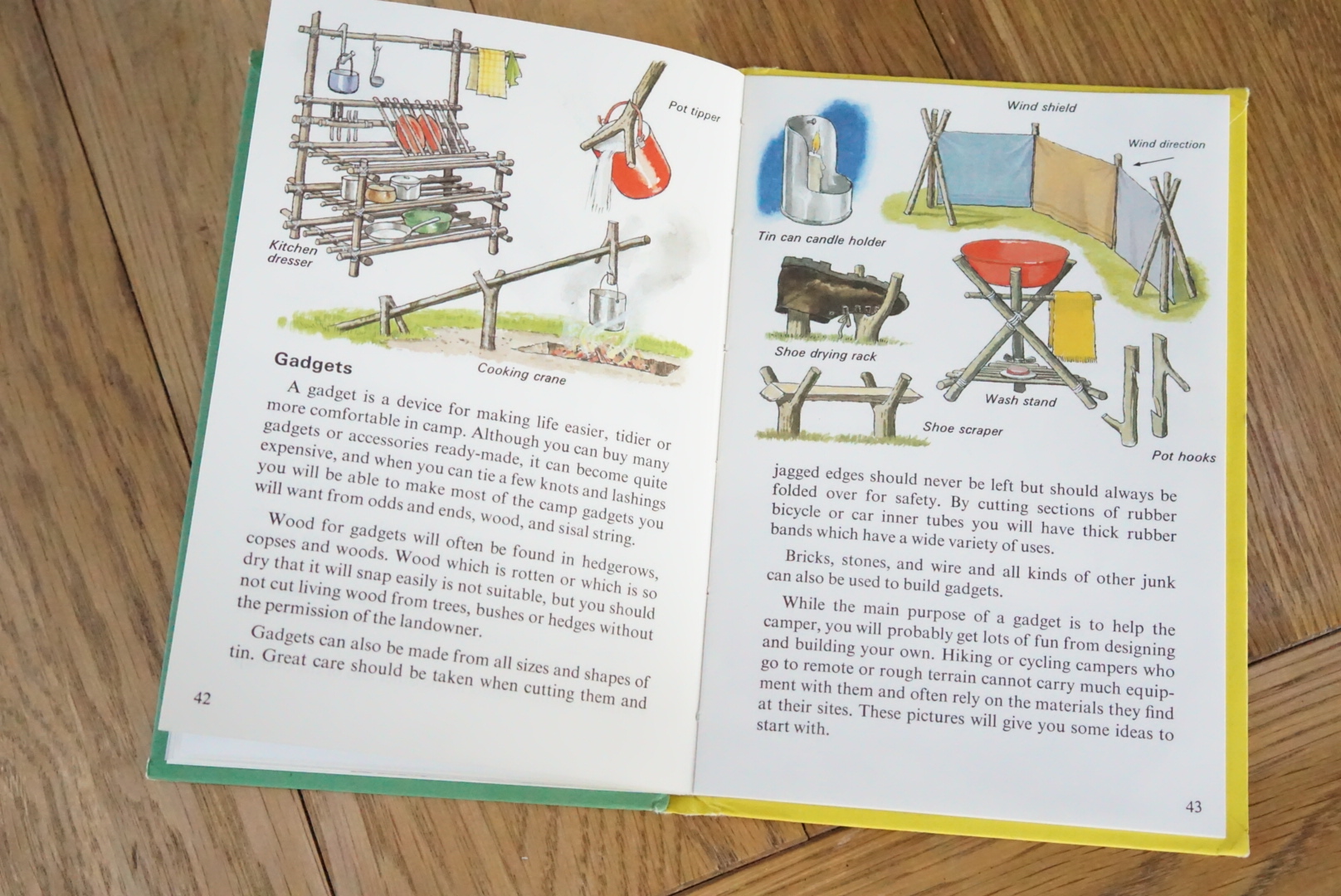

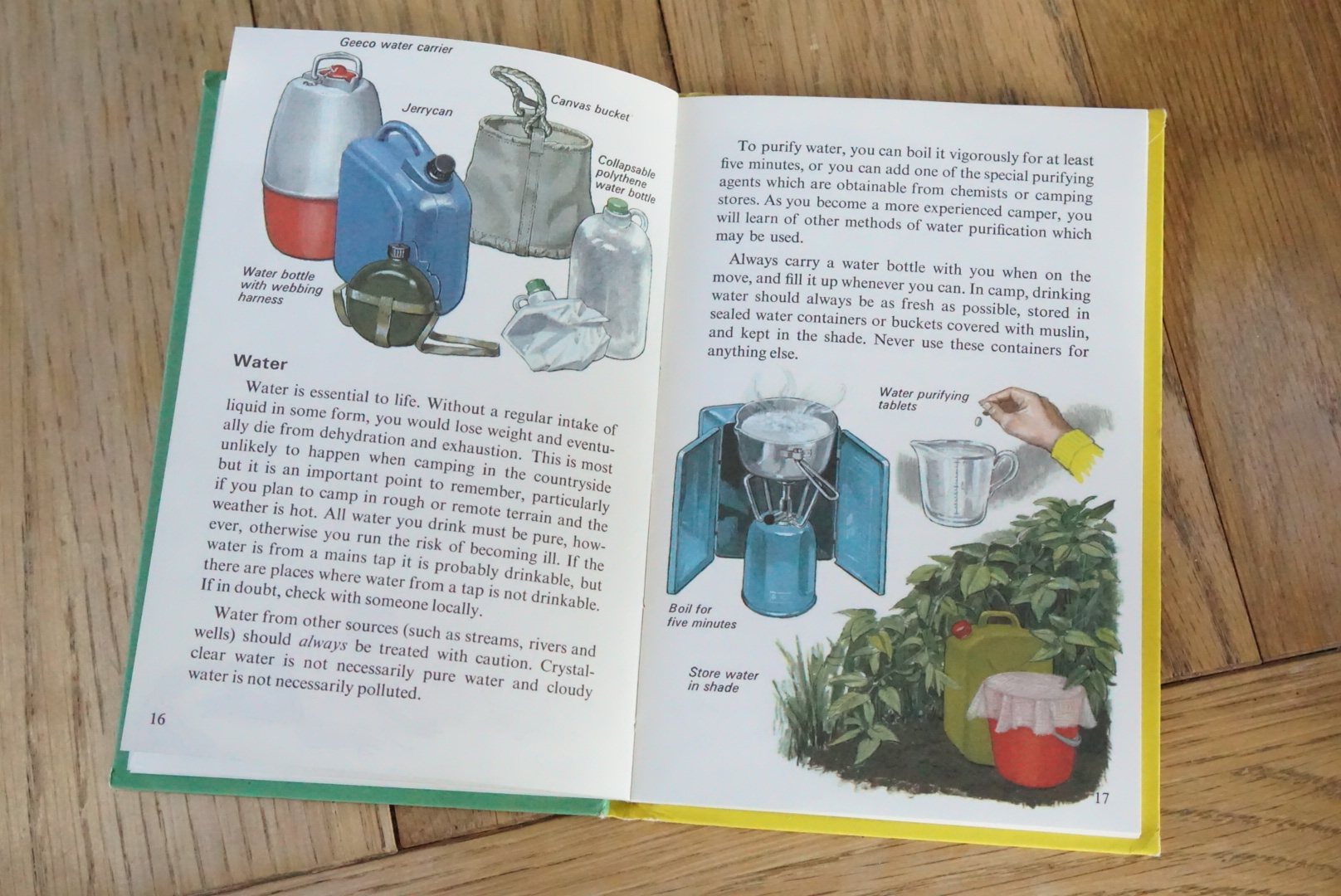

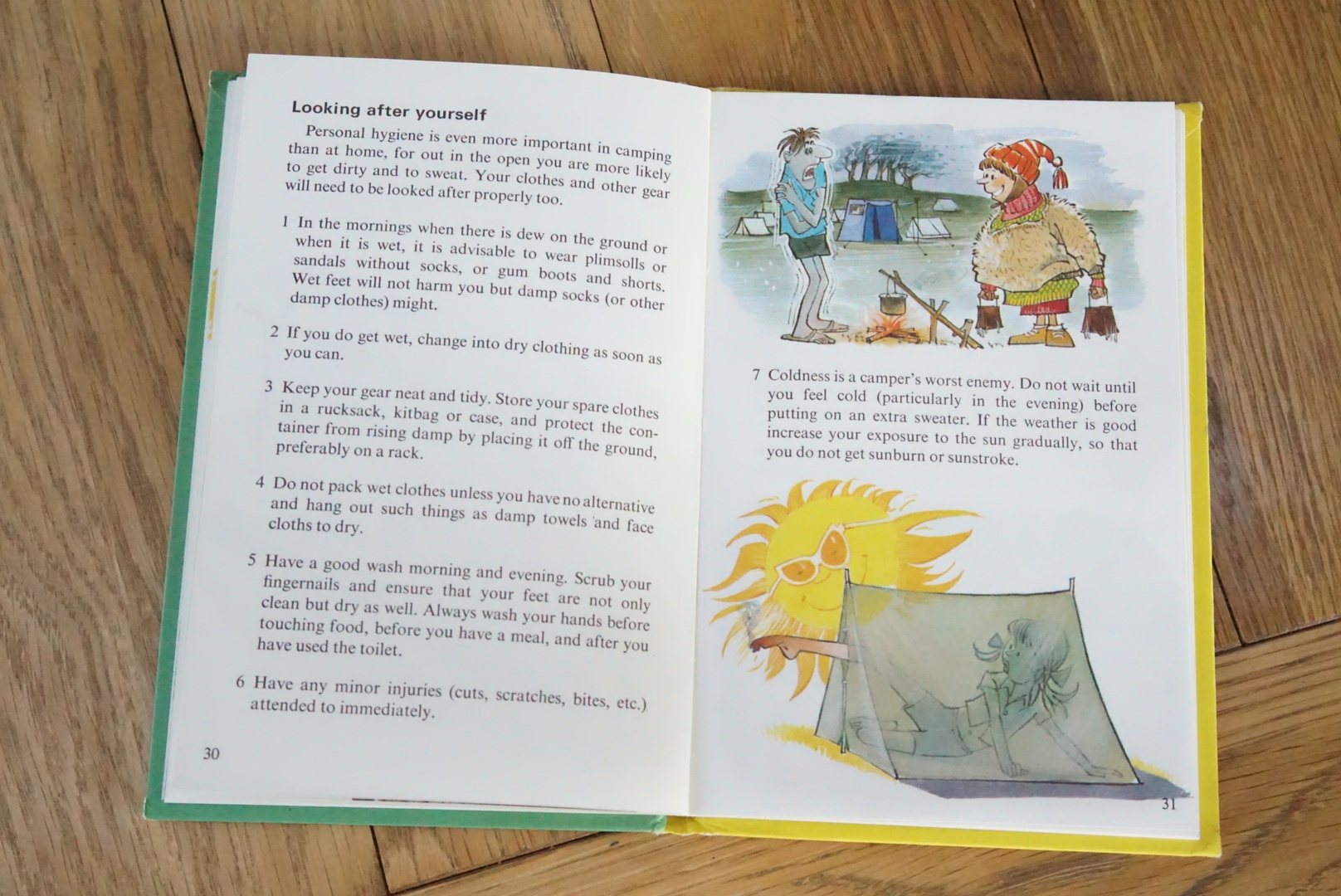
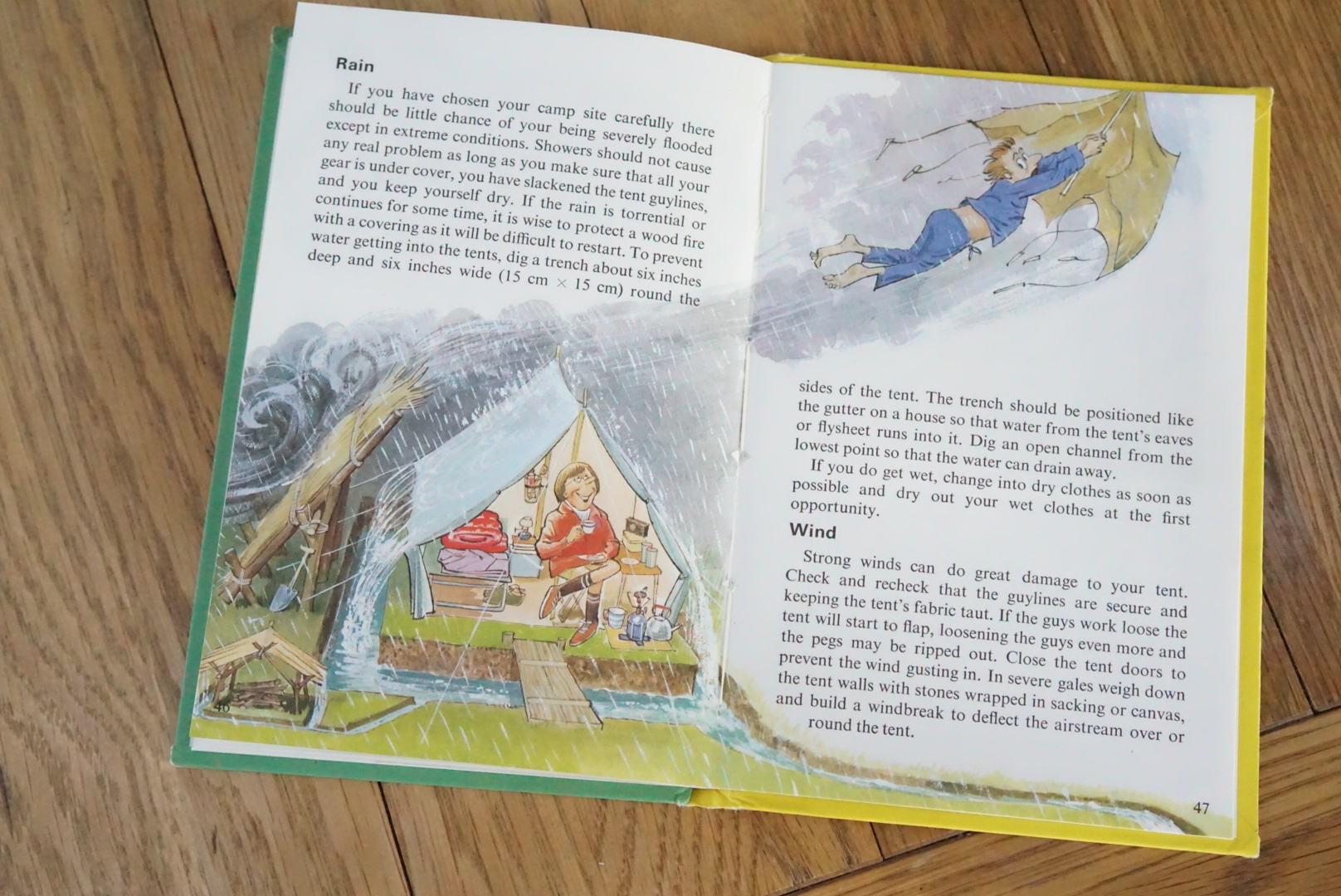



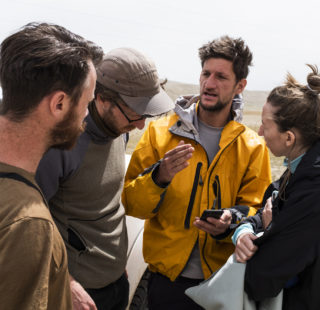
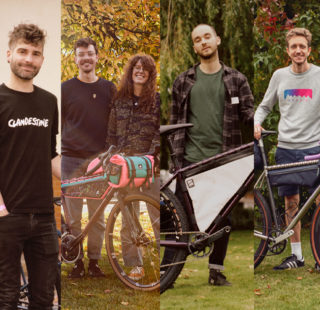








I wish every book about knots has at least such clear illustrations.
They’re great aren’t they!